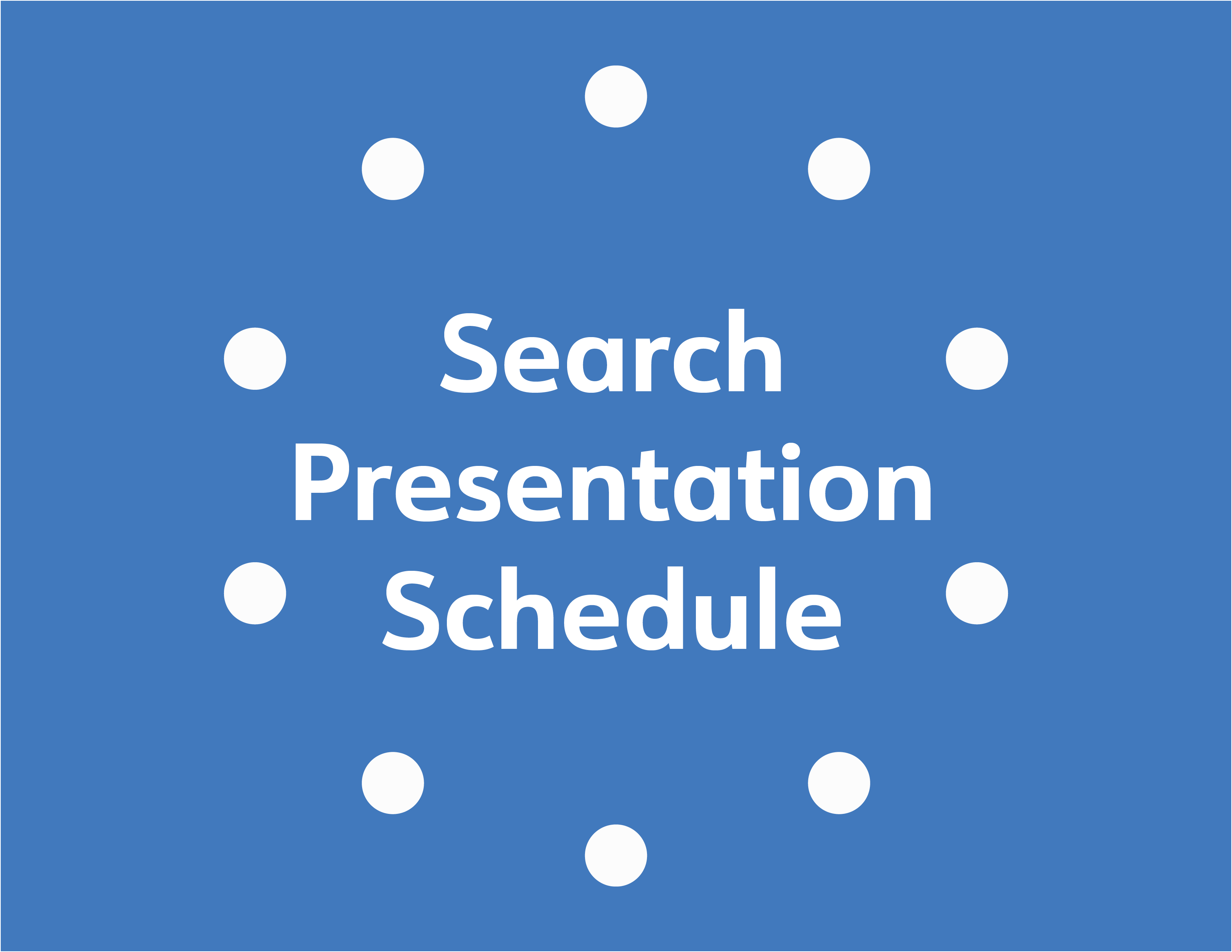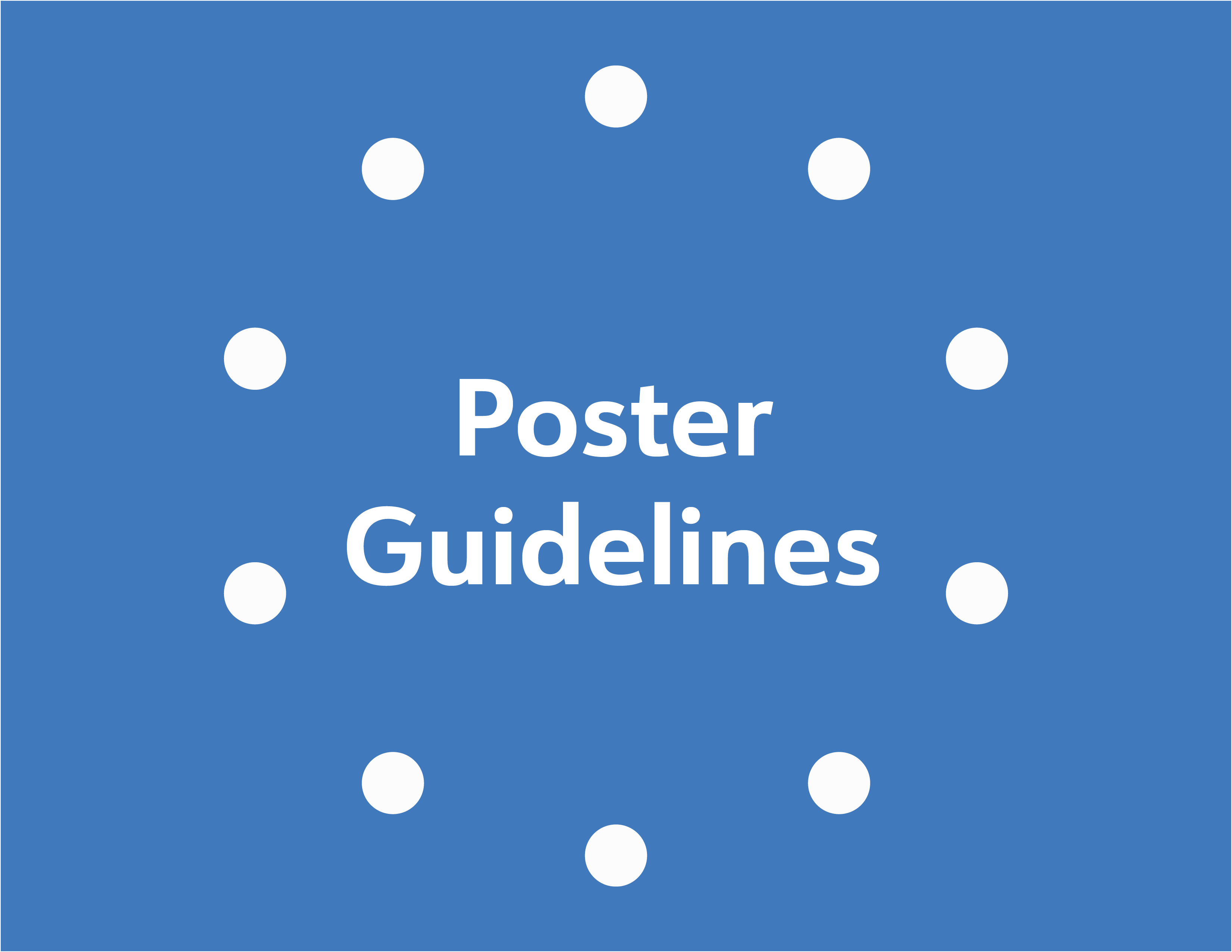
Presentation Formats
Oral Presentations
Oral paper presentations are given a maximum of 15 minutes – 10 minutes for presentation and 5 minutes for discussion and transition to the next paper. These presentations are given in concurrent sessions.
Forums
A forum is an informal 3-hour session and runs concurrently with other sessions. Forums are designed to provide researchers with an opportunity to discuss specific methodological challenges that they have encountered while applying for funding or conducting a project. Forums allow researchers with similar interests to share ideas regarding methodology, sampling, statistical methods, planning studies, and other creative solutions to project challenges.
Workshops
Workshops are scheduled as 90-minute sessions and run concurrently with other sessions. These presentations normally involve methodology or research skills development ideas that involve audience participation.
Poster Sessions
Poster sessions offer a more intimate forum for discussion than a slide-based presentation. They are designed to maximize contact between researchers. Poster presentations are scheduled with dedicated viewing times to avoid any overlap with oral presentations or other events. Presenters are asked to attend their posters during their designated times during the meeting.
About Your Presentation
Presentation Tips
Why Do Bad Presentations Happen to Good Causes?
And How to Ensure They Won’t Happen to Yours
(Andy Goodman & Cause Communications)
Suggestions for Improving your Conference Presentation:
- Know your audience: one of the fastest ways to lose an audience is to begin talking above or below their level of knowledge or outside their job descriptions.
- Regarding the audience: “They’ll probably only remember three things. So pick three things, illustrate them, and repeat them.”
- Audience members want to interact with people in the room. Audience members are potential resources for collaboration.
The “Fatal Five” problematic factors for presentations:
- Reading the slides: “Watching someone read PowerPoint slides is a form of torture that should be banned under the Geneva Convention,” survey respondent.
- Too long with too much information: “Too much of everything... too many slides with too many words, too many points, too much data, too long, too didactic,” survey respondent.
- Lack of interaction: “Presenters often forget that many in the audience… have life and work experience that is waiting to be shared,” survey respondent.
- Lifeless presenters: “Even if I’m interested in the topic, if the speaker is boring, I’m easily distracted by other goings-on in the room…Then I’ totally lost, thinking ‘I need to go shopping!” survey respondent.
- Room/Technical problems: anticipate them and have a backup plan.
Tips for Building your PowerPoint
BACKGROUNDS
- Keep it simple!
- Dark room should have a dark background with light letters
- Light, bright room should have a light background with dark letters
- Use cooler color as the background; warmer color for the content
FONTS
- Use non-serif fonts such as, Arial or Calibri, they are simple and thicker and project better
- Font size should be at least 28 pt
GRAPHS & IMAGES
- Audiences typically prefers graphs over tables
- Graphs should use complementary colors next to each other for contrast
- Audience typically prefers photos over clip art
ANIMATION & SOUNDS
- Use animation sparingly only to emphasize certain points
- Use sounds sparingly only to emphasize certain points or for video clips
CONTENT:
- Use the 8x8 rule. More than 8 lines of text with more than 8-10 words/line distracts from presenter and leads to audience fatigue
- Audience should be able to read entire slide in about 8 seconds on a slide otherwise they focus more on the slide and less on the presenter
- No more than one slide every minute
Remember! A PowerPoint presentation is designed to support a talk, not duplicate it.
Tips for Creating a Poster
For tips on creating and formatting your poster, click here. Here are links to several examples of previous successful NAPCRG posters: “Validation of the Flu Score in a Young Adult Population", "Evaluation of a Virtual Shared Decision Making Program for Pediatric Asthma Management Using a Virtual Health Coach" and “Primary Care Screening Intervention Increases Identification and Linkage to Care for Hepatitis C and HIV Patients within a Large Healthcare System”.
2021 Annual Meeting --- Presenter Information
The 2021 NAPCRG Annual Meeting is being held as a virtual event Nov. 19-23, 2021. Presenters will be notified by the end of August about the status of their abstract submissions.
We understand some of you may have more experience than others when it comes to presenting in a virtual environment. The following information has been prepared to help guide you. Please review this information and contact our staff if you have questions.
Registration: All presenters are required to register for the NAPCRG Annual Meeting and must have a current membership at the time of the event. Registration information can be found here.
49th Annual Meeting Slide Presentation Template: Presenters are welcome to use the NAPCRG PowerPoint template if they choose.
Questions: Please read the following information carefully. If, after reviewing this material, you have questions, please contact Amy Schiska-Lombard at aschiskalombard@napcrg.org.
Step 1: Confirm Your Participation
Check your email for a message from NAPCRG that contains specific deadlines and instructions on how to confirm your participation based on the type of presentation you have been invited to give (e.g., pre-conference workshop, forum, workshop, oral presentation, or poster presentation).
Please check your spam or junk folders for notifications from NAPCRG. Despite best efforts by NAPCRG staff, we know our messages sometimes end up there because your institutions (fortunately) are very good at keeping inboxes secure and spam-free.
Step 2: Update Your Presentation with Appropriate Co-Authors
Lead presenters, go to go to https://submit.napcrg.org to make updates, if needed.
Abstracts for completed research (oral presentations and posters) are eligible to be published in the Annals of Family Medicine, a top-ranked bimonthly primary care research journal. Published works will appear in digital form following the meeting. IMPORTANT: A final list of authors to be cited in the publication is due by September 15. You can update your submission with at updated list of authors any time prior to that date.
Step 3: Prepare Your Virtual Presentation Based on Your Accepted Category
Review and follow directions below based on your accepted presentation category.
Click on the appropriate category for instructions
Address
NAPCRG
11400 Tomahawk Creek Parkway
Leawood, KS 66211
800.274.7928
Email: napcrgoffice@napcrg.org
